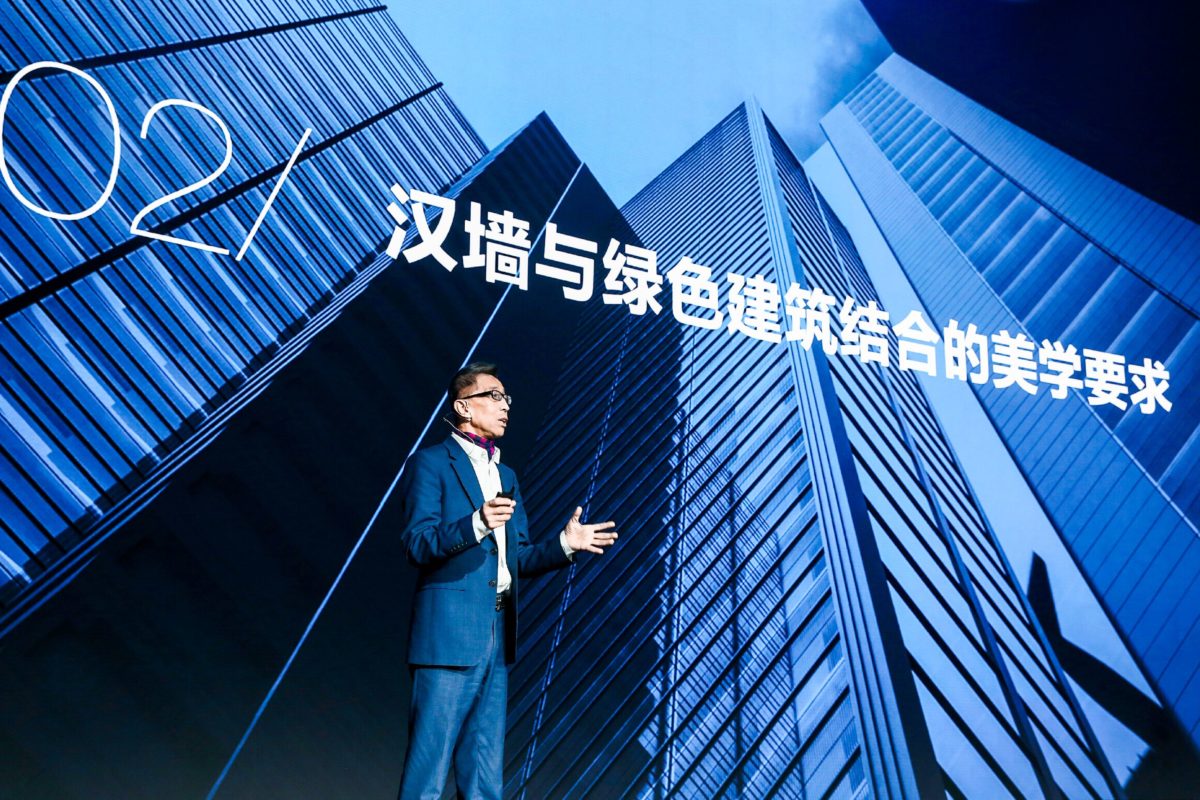Chinese giant Hanergy Thin Film Power Group Ltd has produced another stunning set of full-year figures, with gross profits rocketing from HK$2.68 billion in 2017 to HK$12.12 billion ($1.55 billion) last year, but the annual report also spells out the company’s dependence on supplying manufacturing equipment to domestic industrial parks.
pv magazine reported in September the company’s lucrative production line supply business – which accounted for 92% of contract revenue last year – was dependent on unspecified Hanergy ‘affiliate’ entities forking out significant sums for the establishment of ‘mobile energy industrial parks’ the thin film business then wins contracts to equip.
While there are references in the annual report to ‘co-operation’ with the mobile parks being set up across China, as well as strategic and framework agreements with such projects, there still appears to be no mention of just how much wider Hanergy Group entities have been forced to spend to help facilitate the resulting contracts for the Hong Kong-based thin-film division. The Hanergy figures do, however, state administrative expenses rose last year from HK$990 million to HK$2.25 billion – even with a 19-fold increase in net profit, that’s an awful lot of stationery.
It’s all about the business parks
The success of the industrial park strategy – which gives the lie to the ‘one base and two fronts’ claims of a business which generated only 8% of revenue from downstream operations in 2018 – is hard to question, with production lines bringing in HK$19.51 billion of the total HK$21.25 billion contract revenue.
The move into equipment supply, which insured Hanergy’s Hong Kong unit against the worst effects of Beijing’s 5/31 decision to curtail public solar subsidies, has been so successful the company is preparing to expand its mobile energy industrial park strategy.
In a development which could alarm groups who fear China’s mammoth One Belt, One Road infrastructure drive is a push for geopolitical influence, the Hanergy thin film annual report stated: “The group is currently in negotiation with more industrial parks, including those in foreign countries.”
While last year effectively marked the company as an equipment supply business – and directors may be concerned HK$103 million of contract revenue came from overseas markets versus HK$21.15 billion from China – Hanergy Thin Film made a fresh attempt to put its intra unit trading shenanigans behind it. The annual report said the final trade receivables expected from other Hanergy affiliates were paid up in March 2018 and added: “In recent years, the group has been … substantially reducing its reliance on connected transactions with Hanergy Mobile Energy Holding Group Co. Ltd., Hanergy Hydropower Group (previously known as Hanergy Holding Group) and its affiliates.”
Shares still suspended
There are few warning lights associated with the numbers although it is interesting to note that the application of new accounting rule Hong Kong Financial Reporting Standard 15, in relation to contract revenue and trade receivables, appears to have worked almost entirely in favor of the company’s accounts.
The independent auditor noted it was unable to ascertain the creditworthiness of one, unnamed major customer whose two contracts add up to HK$2.3 billion of Hanergy’s trade receivables and it is curious to see the company has included HK$5.33 billion of prepayments it has made to third-party customers among its current assets. Nevertheless, the picture painted is of a company in rude good health.
All of which should be good news for shareholders, however there is no indication of the company being any nearer a resumption of trading in its stock in Hong Kong after transactions were halted in May 2015. That followed a precipitous collapse in the share price linked to the discovery of intra-unit trading. Shareholders left stranded with stock have been given the option of transferring their stake into a special purpose vehicle with a view to relisting the Hong Kong business in China or seeing Hanergy expunged from the Hong Kong exchange at the end of July.
No dividend
Meanwhile, it is noticeable that of the monster leap in profits seen in 2018, HK$5.19 billion is attributable to the owners of the parent company while non-controlling interests will split only HK$51,000. To add insult to injury, the board decided a year-on-year lurch in net profits from HK$261 million to HK$5.19 billion did not justify a dividend.
In terms of strategy, Hanergy still appears keen to push its downstream business, not least the Hanwall skyscraper product it has high hopes for in the building-integrated PV market. The company has also dipped its toe into the EV market with a tie-up with carmaker the China FAW Group Corp which has led to a Hanergy sunroof product.
But perhaps most interesting is the supply of Hanergy thin film PV to the Odysseus unmanned aerial vehicle (UAV) being developed by Boeing subsidiary Aurora Flight Sciences. Hanergy, whose Alta Devices U.S. subsidiary is working with Aurora on the project, reports the unit is due for flight tests this month. With the UAV intended to stay airborne for up to three months non-stop, its surveillance applications are obvious and it would be fascinating to know what President Trump and the U.S. Congress think of that arrangement.
This content is protected by copyright and may not be reused. If you want to cooperate with us and would like to reuse some of our content, please contact: editors@pv-magazine.com.




By submitting this form you agree to pv magazine using your data for the purposes of publishing your comment.
Your personal data will only be disclosed or otherwise transmitted to third parties for the purposes of spam filtering or if this is necessary for technical maintenance of the website. Any other transfer to third parties will not take place unless this is justified on the basis of applicable data protection regulations or if pv magazine is legally obliged to do so.
You may revoke this consent at any time with effect for the future, in which case your personal data will be deleted immediately. Otherwise, your data will be deleted if pv magazine has processed your request or the purpose of data storage is fulfilled.
Further information on data privacy can be found in our Data Protection Policy.